Introduction
Everyone on cryptocurrency market had contact with game theory in blockchain. First of all, it’s impossible to be a part of society and don’t interact based on game theory. Let me explain it little bit better soon.
I am starting from definition and will take you to journey step by step, so let’s get start it.
What is Game Theory ?
Indeed, game theory is a branch of mathematics that studies decision-making in strategic situations. The outcome of one’s decision depends on the decisions of other individuals or players.
It provides a framework for analyzing and predicting the behavior of individuals or groups of individuals. They are interacting with each other in various contexts such as economics, political science, psychology, and biology.
Game Theory in Games
In a game, each player has a set of possible actions they can take. Then, outcome of the game is determined by the combination of actions taken by all players. Game theory models these interactions using mathematical representations.
Such as matrices, trees, or graphs, and analyzes the strategies that players can use to achieve their objectives.
We using this theory to study various types of games, such as zero-sum games. The gain of one player equals the loss of the other player, and non-zero-sum games.
In which the outcome can be beneficial or detrimental to all players. Another using is to analyze games with multiple players, simultaneous or sequential moves, and complete or incomplete information.
Practical Applications
Game theory has many practical applications in areas such as economics, political science, and business. Everywhere there we can understand and predict the behavior of individuals and organizations in strategic decision-making situations.
We can see another applicaiton in other fields, such as biology, computer science, and psychology. It helping study social behavior and decision-making processes.
First Conclusions
Overall, game theory provides a powerful tool for analyzing and predicting the behavior of individuals or groups. It become an important part of many fields of study, but let’s come to using game theory in blockchain …
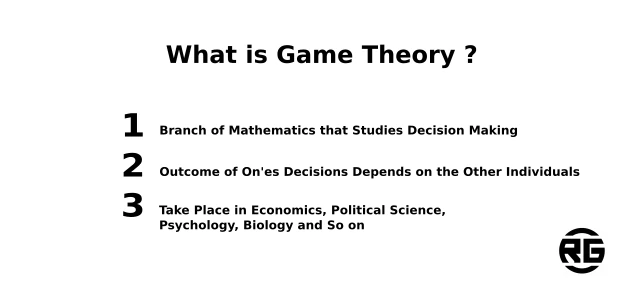
Surely, game theory is really one whose works in many places.
Game Theory in Blockchain
Especially, blockchain technology has been making headlines for its potential to disrupt traditional industries. It’s also making an impact in the field of game theory.
So to say, game theory is a mathematical approach to understanding strategic decision-making. Using of it we can find in various fields, including economics, politics, and psychology.
Indeed, in recent years, game theory has become an important tool for understanding how blockchain networks operate and evolve.
Blockchain technology is built on a decentralized network of nodes that work together to maintain a shared ledger of transactions. So, each node in the network has an incentive to participate in the network.
These incentives can sometimes conflict with each other. For example, a node might be incentivized to cheat the system by creating fraudulent transactions. Another example is attempting to gain control of the network.
Game theory can help to model these scenarios and identify strategies that nodes can use to optimize their outcomes.
Byzantine Generals Problem
One of the most well-known applications of game theory in blockchain is the concept of the “Byzantine Generals Problem.” This problem arises when a group of generals must coordinate their actions to launch a coordinated attack.
Some of the generals may be traitors who are trying to sabotage the plan. The problem can be modeled as a game. Each general must choose whether to attack or retreat based on the actions of the other generals.
Game theory can help to identify the optimal strategy for each general. Strategy is based on the actions of the other generals and the potential payoffs of each decision.
Mining
Another application of game theory in blockchain is the concept of “mining.” Mining is the process by which nodes in the network compete to solve a complex mathematical puzzle in order to validate a new block of transactions.
The first node to solve the puzzle is rewarded with a new block of cryptocurrency, so it provides an incentive for nodes to participate in the network.
However, this incentive can also lead to a “tragedy of the commons” scenario, in which nodes compete to mine as much cryptocurrency as possible, which can result in a degradation of the network’s performance.
Game theory can help to mitigate these issues by identifying strategies that nodes can use to optimize their outcomes while also maintaining the integrity of the network. For example, nodes can use strategies such as “cooperation” or “tit-for-tat” to incentivize other nodes to behave honestly and avoid cheating the system.
Additionally, nodes can use strategies such as “defection” or “punishment” to discourage other nodes from cheating and to maintain the integrity of the network.
Second Conclusions
Overall, game theory has become an important tool for understanding the complex dynamics of blockchain networks. By modeling scenarios and identifying strategies that nodes can use to optimize their outcomes, game theory can help to promote the stability and security of blockchain networks.
As blockchain technology continues to evolve and mature. It’s likely that game theory will play an increasingly important role in shaping the future of this disruptive technology, also.

In fact, game theory find use in blockchain as well.
About Consensus Mechanism
A consensus mechanism is a critical component of any blockchain network. It is the process by which nodes in the network agree on the state of the ledger and validate transactions.
In other words, it is the mechanism that ensures that all nodes in the network are in agreement about the history of the network and the transactions that have taken place. Without a robust consensus mechanism, a blockchain network cannot function effectively or securely.
There are several different consensus mechanisms in blockchain networks. Each with its own strengths and weaknesses. Some of the most common consensus mechanisms include:
PoW
Proof of Work is the most widely used consensus mechanism, and is used by popular cryptocurrencies such as Bitcoin and Ethereum Classic. In a PoW system, nodes in the network compete to solve a complex mathematical puzzle in order to validate a new block of transactions.
The first node to solve the puzzle is rewarded with a new block of cryptocurrency. PoW is a secure and proven consensus mechanism, but it is energy-intensive and can lead to centralization of mining power.
PoS
In Proof of Stake system, nodes in the network are selected to validate transactions based on the amount of cryptocurrency they hold or “stake” in the network.
This mechanism is less energy-intensive than PoW and is more resistant to centralization. However, it can also be vulnerable to certain types of attacks, such as the “nothing at stake” problem. Here the most popular is Etherum.
DPoS
In Delegated Proof of Stake system, nodes in the network are selected to validate transactions through a voting process. Then, token holders in the network vote for “delegates” who are responsible for validating transactions.
DPoS is faster and more efficient than other consensus mechanisms, but it can be vulnerable to centralization and vote manipulation.
PoA
In Proof of Authority system, nodes in the network are selected to validate transactions based on their identity or authority. This mechanism is faster and more efficient than other consensus mechanisms, but it is less decentralized and can be vulnerable to collusion among the validators.
In fact, each of these consensus mechanisms has its own advantages and disadvantages. The choice of mechanism will depend on the specific needs and goals of the blockchain network.
So some blockchain networks may even use a combination of different consensus mechanisms to achieve a balance between security, decentralization, and efficiency.
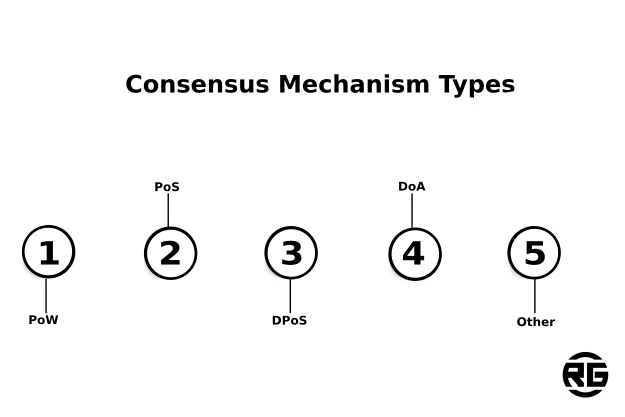
Given that we have many consensus mechanisms, each of them uses game theory.
Third Conclusions
In conclusion, consensus mechanisms are a critical component of any blockchain network.
Moreover, they ensure that all nodes in the network are in agreement about the state of the ledger and the validity of transactions.
On the other hand, there are several different consensus mechanisms available, each with its own strengths and weaknesses, and the choice of mechanism will depend on the specific needs and goals of the network.
As blockchain technology continues to evolve, it is likely that new consensus mechanisms will emerge, each designed to meet the unique challenges of decentralized networks.
We come back little bit to theory about basics of game theory.
Nash Equilibrium

What is Nash Equilibrium ?
Nash equilibrium is a concept in game theory that describes a state in which each player in a game is making their best decision given the decisions of the other players. In other words, a Nash equilibrium is a situation where no player has an incentive to change their strategy, given the strategies of the other players.
Prisoner’s Dilemma
To understand Nash equilibrium, consider a simple game such as the Prisoner’s Dilemma. In this game, two suspects are being interrogated by the police, and they can either cooperate with each other or betray each other. If both suspects cooperate, they both receive a light sentence.
When two suspects betray each other, they both receive a heavy sentence. If one suspect betrays the other while the other cooperates, the betrayer receives a light sentence while the other receives a heavy sentence.
In this game, the Nash equilibrium occurs when both suspects betray each other.
If one suspect cooperates while the other betrays, the betrayer receives a lighter sentence and the cooperator receives a heavier sentence. Therefore, both suspects have an incentive to betray each other, leading to a Nash equilibrium.
Outcome of Game
The concept of Nash equilibrium is important in game theory because it provides a way to predict the outcome of a game when all players are rational and trying to maximize their own gains.
However, it is important to note that not all games have a unique Nash equilibrium, and some games may have multiple equilibria or no equilibria at all.
Fourth Conclusions
In summary, Nash equilibrium is a state in game theory where no player has an incentive to change their strategy, given the strategies of the other players.
It is an important concept in game theory that allows us to predict the outcome of a game when all players are rational and trying to maximize their own gains.
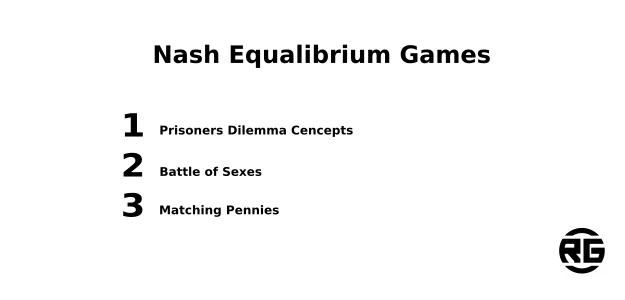
We have several games that demonstrate Nash equilibrium, in real.
The Most Important Concepts
Game theory is a branch of mathematics that studies the behavior of decision-makers in strategic situations. Here are some of the most important concepts in game theory:
Players
In a game, the individuals or groups making decisions – players. So, each player has a set of actions or strategies they can take.
Payoffs
In game theory, payoffs refer to the outcomes or rewards that players receive based on their strategies. Then, payoffs can be positive (rewards) or negative (penalties).
Strategies
Strategies are the choices that players make in a game. Each player has a set of strategies available to them, and they must choose one to play.
Nash Equilibrium
A Nash equilibrium is a state in a game where no player has an incentive to change their strategy, given the strategies of the other players. It is a key concept in game theory that helps us predict the outcome of games when all players are rational.
Dominant Strategy
A dominant strategy is a strategy that is always better for a player, no matter what the other players do.
Prisoner’s Dilemma
The Prisoner’s Dilemma is a classic game in game theory that illustrates how rational individuals may not cooperate, even if it is in their best interest to do so.
Zero-sum Game
A zero-sum game is a game where the sum of the payoffs for all players is zero. This means that one player’s gain is always equal to another player’s loss.
Cooperative Game
A cooperative game is a game where players can work together to achieve a common goal. Overall, in cooperative games, players may be able to negotiate and make binding agreements.
Non-Cooperative Game
A non-cooperative game is a game where players cannot make binding agreements. In non-cooperative games, players must rely on their own strategies and decisions, indeed.
Game Trees
A game tree is a graphical representation of a game that shows the different possible moves and outcomes for each player.
These are some of the most important concepts in game theory. By studying these concepts, we can better understand how individuals and groups make decisions in strategic situations and predict the outcomes of games.
We are jumping into game theory in cryptocurrencies, because this conception drive every trader and investor on the market.
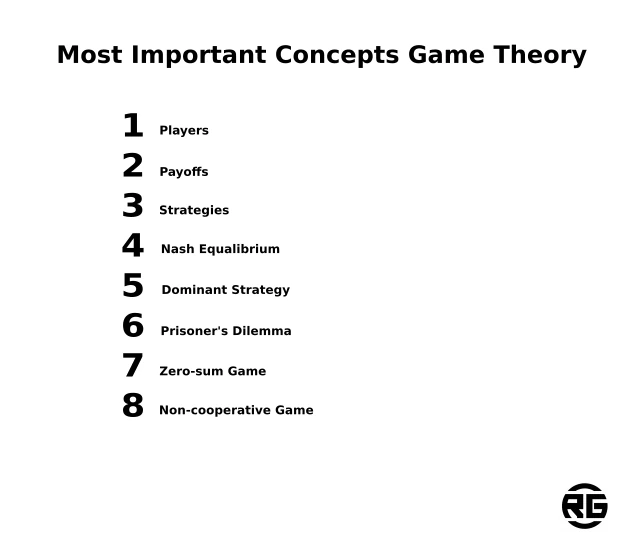
Certainly, after learning a few basic concepts, game theory will no longer be so foreign to you.
Game Theory in Cryptocurrencies
Game theory has significant applications in the world of cryptocurrency. Cryptocurrencies are decentralized digital currencies that rely on blockchain technology to maintain their integrity and security.
Blockchain technology is based on a network of nodes that work together to maintain a distributed ledger of all transactions in the system.
Integrity of the System
One of the key challenges in the cryptocurrency world is maintaining the integrity of the system, which requires a consensus among all nodes in the network.
Game theory can be used to study the behavior of individual nodes and predict how they will interact with each other in order to achieve consensus.
Problem of 51 % Attack
One example of this is the problem of the “51% attack.” In a cryptocurrency network, a 51% attack occurs when one entity gains control of more than 50% of the network’s computing power, allowing them to control the blockchain and potentially manipulate transactions or double-spend coins. Game theory can help us understand how individual nodes will behave in this scenario and how to prevent such attacks.
Another application of game theory in cryptocurrency is the design of incentives to encourage nodes to act in the best interests of the system. Cryptocurrency systems often rely on incentives such as block rewards to motivate nodes to participate in the network and maintain the integrity of the blockchain. Game theory can help us design optimal incentive structures that encourage nodes to act honestly and maintain the security of the system.
Finally, game theory can be used to analyze the behavior of traders in cryptocurrency markets. Cryptocurrency markets are highly volatile and subject to frequent fluctuations in price. Game theory can help us understand the strategic behavior of traders in these markets and predict how they will react to different market conditions.
Fifth Conclusions
In summary, game theory has significant applications in the world of cryptocurrency. By studying the behavior of individual nodes and traders in the cryptocurrency ecosystem, we can better understand how to maintain the security and integrity of these systems and design optimal incentive structures to encourage honest participation.
What about bitcoin and game theory ?
Game Theory in Bitcoin
Game theory has been used extensively in the analysis of Bitcoin, the world’s first and most well-known cryptocurrency. Bitcoin is a decentralized digital currency that operates on a peer-to-peer network, allowing for secure and anonymous transactions without the need for a central authority.
Integrity on Blockchain
One of the key challenges in the Bitcoin ecosystem is maintaining the integrity of the blockchain, the distributed ledger that records all transactions in the network. Game theory can be used to analyze the behavior of individual nodes in the network and predict how they will interact with each other in order to achieve consensus and maintain the integrity of the blockchain.
Double-spending
One example of this is the problem of double-spending, where a user attempts to spend the same Bitcoin twice. By using game theory we can analyze the incentives of individual nodes in the network.
Moreover, can we predict how they will behave in response to potential double-spending attacks. This can help developers design optimal consensus mechanisms that discourage double-spending and maintain the integrity of the blockchain.
Design of Incentive Mechanisms
Another application of game theory in Bitcoin is the design of incentive mechanisms. This mechanisms encourage miners to participate in the network and validate transactions. Bitcoin relies on a proof-of-work consensus mechanism.
Miners compete to solve complex mathematical puzzles in order to validate transactions and earn block rewards. Game theory can help us design optimal incentive structures in the network. That encourage miners to participate honestly and maintain the security.
Finally, game theory can be used to analyze the behavior of traders in the Bitcoin market. The Bitcoin market is highly volatile and subject to frequent fluctuations in price, and game theory can help us understand the strategic behavior of traders in response to different market conditions and predict how they will react to changes in supply and demand.
Sixth Conclusions
In summary, game theory has significant applications in the analysis of Bitcoin. Start from maintaining the integrity of the blockchain to designing optimal incentive mechanisms for miners.
Finally, analyzing the behavior of traders in the market. By applying game theory to the analysis of Bitcoin, we can better understand the strategic behavior of participants in the ecosystem. Then design more effective mechanisms to maintain the security and integrity of the network.
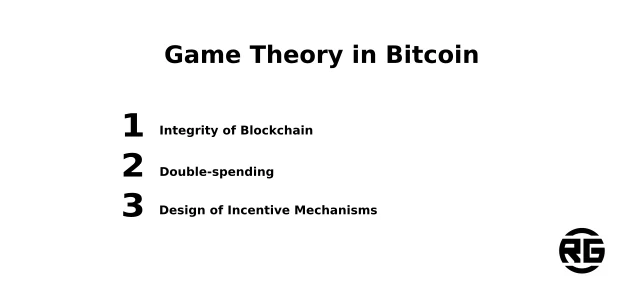
The specific interaction mechanisms in the Bitcoin network use game theory.
Final Conclusions
Game theory is visible in everyday life. All of us took part in decision taking based on game theory. Not all of us simply knows about it.
In fact game theory is everywhere and is very important part of decision taking in society. We can have contact with game theory in various contexts such as economics, political science, psychology, and biology.
Obviously, game theory is also on financial markets. If we talk about game theory in blockchain we can jump into topics like consensus mechanism, mining or trading. This mathematical concept is real and without any doubt game theory inventor, John Nash deserves to receive Noble price.

Leave a Reply
You must be logged in to post a comment.